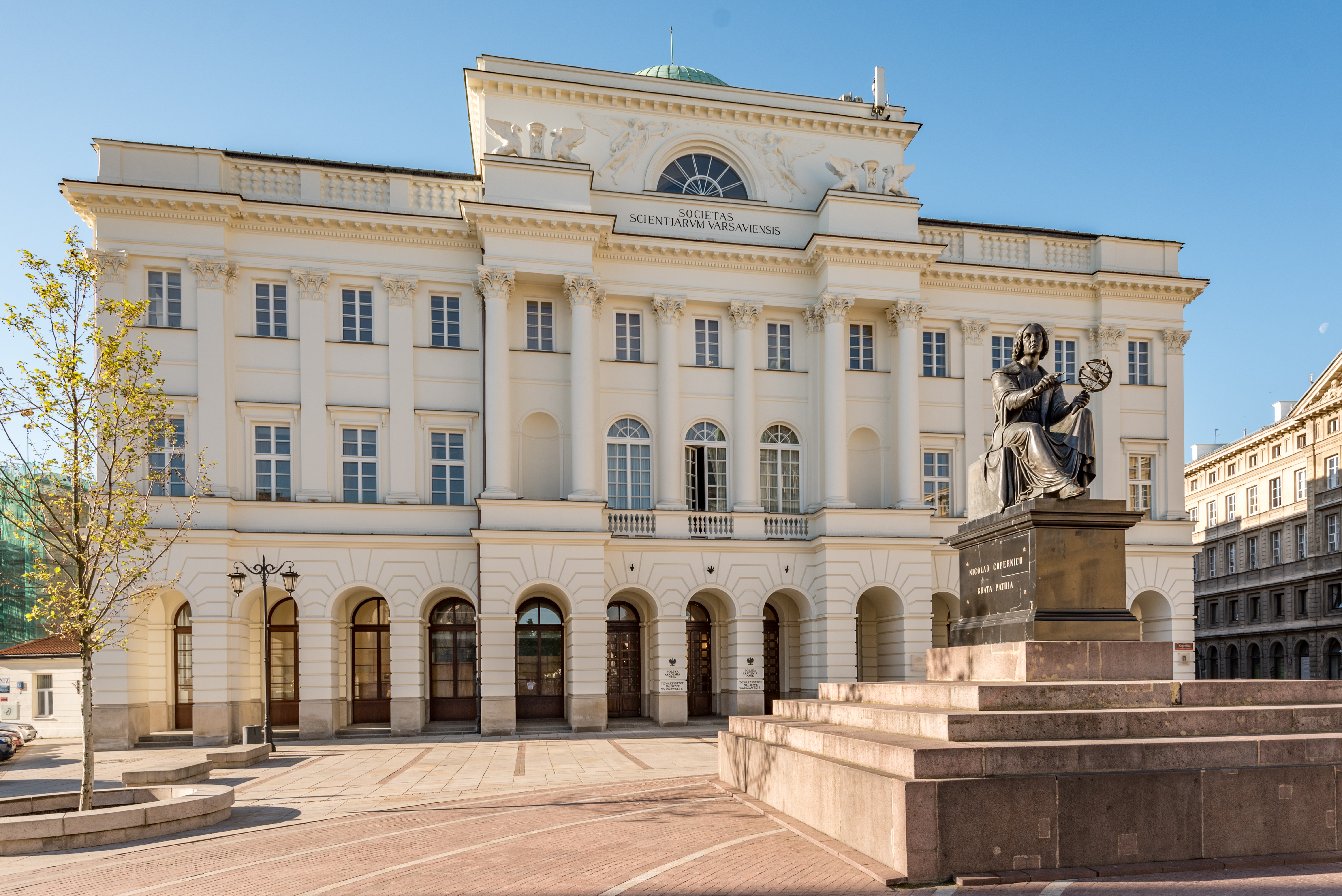|
Tadeusz Banachiewicz
Tadeusz Julian Banachiewicz (13 February 1882, Warsaw – 17 November 1954, Kraków) was a Polish astronomer, mathematician and geodesist. Scientific career He was educated at University of Warsaw and his thesis was on "reduction constants of the Repsold heliometer". In 1905, after the closure of the University by the Russians, he moved to Göttingen and in 1906 to the Pulkovo Observatory. He also worked at the Engelhardt Observatory at Kazan University from 1910 to 1915.The Observatory in the years of T. Banachiewicz's management (1919-1954) Krakow Astronomical Observatory, Retrieved 10 February 2010 In 1919, after Poland regained its independence, Banachiewicz moved to |
Chronocinematograph
Chronocinematograph is an astronomical instrument consisting of a film camera, chronometer and chronograph. The device records images using a more precise timetable for observing an eclipse. It was invented in 1927 by a Polish astronomer, mathematician and geodesist Tadeusz Banachiewicz for observing total solar eclipse A solar eclipse occurs when the Moon passes between Earth and the Sun, thereby obscuring the view of the Sun from a small part of the Earth, totally or partially. Such an alignment occurs during an eclipse season, approximately every six month ...s. During the same year, Banachiewcz used his device for solar observations in Lapland (Sweden), then in USA (1932) and Greece, Japan and Siberia (1936). The invention enhanced the precision for determining the time of an eclipse, due to more precisely timed photos of Baily's beads, and quantifying the duration of totality. This could not have been observed as closely as before due to the brightness of the sun. ... [...More Info...] [...Related Items...] OR: [Wikipedia] [Google] [Baidu] |
Warsaw
Warsaw ( pl, Warszawa, ), officially the Capital City of Warsaw,, abbreviation: ''m.st. Warszawa'' is the capital and largest city of Poland. The metropolis stands on the River Vistula in east-central Poland, and its population is officially estimated at 1.86 million residents within a greater metropolitan area of 3.1 million residents, which makes Warsaw the 7th most-populous city in the European Union. The city area measures and comprises 18 districts, while the metropolitan area covers . Warsaw is an Alpha global city, a major cultural, political and economic hub, and the country's seat of government. Warsaw traces its origins to a small fishing town in Masovia. The city rose to prominence in the late 16th century, when Sigismund III decided to move the Polish capital and his royal court from Kraków. Warsaw served as the de facto capital of the Polish–Lithuanian Commonwealth until 1795, and subsequently as the seat of Napoleon's Duchy of Warsaw. Th ... [...More Info...] [...Related Items...] OR: [Wikipedia] [Google] [Baidu] |
IAU Code
This is a list of observatory codes (IAU codes or MPC codes) published by the Minor Planet Center The Minor Planet Center (MPC) is the official body for observing and reporting on minor planets under the auspices of the International Astronomical Union (IAU). Founded in 1947, it operates at the Smithsonian Astrophysical Observatory. Function .... For a detailed description, ''see observations of small Solar System bodies''. List References * {{DEFAULTSORT:Observatory codes * Astronomy-related lists Technology-related lists ... [...More Info...] [...Related Items...] OR: [Wikipedia] [Google] [Baidu] |
Solar Eclipse
A solar eclipse occurs when the Moon passes between Earth and the Sun, thereby obscuring the view of the Sun from a small part of the Earth, totally or partially. Such an alignment occurs during an eclipse season, approximately every six months, during the new moon phase, when the Moon's orbital plane is closest to the plane of the Earth's orbit. In a total eclipse, the disk of the Sun is fully obscured by the Moon. In partial and annular eclipses, only part of the Sun is obscured. Unlike a lunar eclipse, which may be viewed from anywhere on the night side of Earth, a solar eclipse can only be viewed from a relatively small area of the world. As such, although total solar eclipses occur somewhere on Earth every 18 months on average, they recur at any given place only once every 360 to 410 years. If the Moon were in a perfectly circular orbit and in the same orbital plane as Earth, there would be total solar eclipses once a month, at every new moon. Instead, because the ... [...More Info...] [...Related Items...] OR: [Wikipedia] [Google] [Baidu] |
Astronomical Instrument
Astronomical instruments include: * Alidade *Armillary sphere * Astrarium *Astrolabe * Astronomical clock *the Antikythera mechanism, an astronomical clock * Blink comparator * Bolometer *the Canterbury Astrolabe Quadrant *Celatone *Celestial sphere * Charge-coupled device *Computers * CMOS sensor * Coronagraph *Cosmolabe *Dioptra * Equatorial ring * Equatorium *Gnomon *Inclinometer *Interferometer * Kamal * Meridian circle * Microchannel plate detector * Mural instrument * Nebra sky disk *Nocturnal * Octant * Optical spectrometer, a.k.a., Spectrograph * Orrery *Photographic plate * Photometer * Planisphere *the Prague astronomical clock * Quadrant * Reticle * Radio plate * Retroreflector *Scaphe *Sextant *Starshade * Space telescope *Spectrometers *Sundial * Telescope * Torquetum * Triquetrum *Zenith telescope See also * Astronomy * Outline of astronomy * Surveying instrument * Measurement instrument {{DEFAULTSORT:Astronomical instruments Instruments Instrument may refer ... [...More Info...] [...Related Items...] OR: [Wikipedia] [Google] [Baidu] |
Bulgaria
Bulgaria (; bg, България, Bǎlgariya), officially the Republic of Bulgaria,, ) is a country in Southeast Europe. It is situated on the eastern flank of the Balkans, and is bordered by Romania to the north, Serbia and North Macedonia to the west, Greece and Turkey to the south, and the Black Sea to the east. Bulgaria covers a territory of , and is the sixteenth-largest country in Europe. Sofia is the nation's capital and largest city; other major cities are Plovdiv, Varna and Burgas. One of the earliest societies in the lands of modern-day Bulgaria was the Neolithic Karanovo culture, which dates back to 6,500 BC. In the 6th to 3rd century BC the region was a battleground for ancient Thracians, Persians, Celts and Macedonians; stability came when the Roman Empire conquered the region in AD 45. After the Roman state splintered, tribal invasions in the region resumed. Around the 6th century, these territories were settled by the early Slavs. The Bulg ... [...More Info...] [...Related Items...] OR: [Wikipedia] [Google] [Baidu] |
Sofia University
Sofia University, "St. Kliment Ohridski" at the University of Sofia, ( bg, Софийски университет „Св. Климент Охридски“, ''Sofijski universitet „Sv. Kliment Ohridski“'') is the oldest higher education institution in Bulgaria. Founded on 1 October 1888, the edifice of the university was constructed between 1924 and 1934 with the financial support of the brothers Evlogi Georgiev and Hristo Georgiev (whose sculptures are now featured on its façade) and has an area of 18,624 m2 and a total of 324 premises. The university has 16 faculties and three departments, where over 21,000 students receive their education. The current rector is Anastas Gerdzhikov. It has been consistently ranked as the top university in Bulgaria according to national and international rankings, being constantly among the best four percent of world universities according to ''QS World University Rankings''. History The university was founded on 1 October 1888— ... [...More Info...] [...Related Items...] OR: [Wikipedia] [Google] [Baidu] |
University Of Poznań
A university () is an institution of higher (or tertiary) education and research which awards academic degrees in several academic disciplines. ''University'' is derived from the Latin phrase ''universitas magistrorum et scholarium'', which roughly means "community of teachers and scholars". Universities typically offer both undergraduate and postgraduate programs. The first universities in Europe were established by Catholic Church monks. The University of Bologna (), Italy, which was founded in 1088, is the first university in the sense of: *being a high degree-awarding institute. *using the word ''universitas'' (which was coined at its foundation). *having independence from the ecclesiastic schools and issuing secular as well as non-secular degrees (with teaching conducted by both clergy and non-clergy): grammar, rhetoric, logic, theology, canon law, notarial law.Hunt Janin: "The university in medieval life, 1179–1499", McFarland, 2008, , p. 55f.de Ridder-Symoens, Hilde' ... [...More Info...] [...Related Items...] OR: [Wikipedia] [Google] [Baidu] |
Adam Mickiewicz University In Poznań
The Adam Mickiewicz University ( pl, Uniwersytet im. Adama Mickiewicza w Poznaniu; Latin: ''Universitas Studiorum Mickiewicziana Posnaniensis'') is a research university in Poznań, Poland. It traces its origins to 1611, when under the Royal Charter granted by King Sigismund III Vasa, the Jesuit College became the first university in Poznań. The Poznań Society for the Advancement of Arts and Sciences which played an important role in leading Poznań to its reputation as a chief intellectual centre during the Age of Positivism and partitions of Poland, initiated founding of the university. The inauguration ceremony of the newly founded institution took place on 7 May 1919 that is 308 years after it was formally established by the Polish king and on 400th anniversary of the foundation of the Lubrański Academy which is considered its predecessor. Its original name was Piast University (Polish: ''Wszechnica Piastowska''), which later in 1920 was renamed to University of ... [...More Info...] [...Related Items...] OR: [Wikipedia] [Google] [Baidu] |
Acta Astronomica
''Acta Astronomica'' is a quarterly peer-reviewed scientific journal covering astronomy and astrophysics. It was established in 1925 by the Polish astronomer Tadeusz Banachiewicz. Initially, the journal published articles in Latin, later English, French, and German were added as allowed journal languages. Nowadays, all papers are published in English. The journal is published by Copernicus Foundation for Polish Astronomy and the editors-in-chief are M. Jaroszyński and Andrzej Udalski (University of Warsaw). Abstracting and indexing This journal is indexed in Current Contents/Physical, Chemical & Earth Sciences, the Science Citation Index Expanded, and Scopus. According to the ''Journal Citation Reports'', the journal has a 2019 impact factor The impact factor (IF) or journal impact factor (JIF) of an academic journal is a scientometric index calculated by Clarivate that reflects the yearly mean number of citations of articles published in the last two years in a gi ... [...More Info...] [...Related Items...] OR: [Wikipedia] [Google] [Baidu] |
Polish Academy Of Sciences
The Polish Academy of Sciences ( pl, Polska Akademia Nauk, PAN) is a Polish state-sponsored institution of higher learning. Headquartered in Warsaw, it is responsible for spearheading the development of science across the country by a society of distinguished scholars and a network of research institutes. It was established in 1951, during the early period of the Polish People's Republic following World War II. History The Polish Academy of Sciences is a Polish state-sponsored institution of higher learning, headquartered in Warsaw, that was established by the merger of earlier science societies, including the Polish Academy of Learning (''Polska Akademia Umiejętności'', abbreviated ''PAU''), with its seat in Kraków, and the Warsaw Society of Friends of Learning (Science), which had been founded in the late 18th century. The Polish Academy of Sciences functions as a learned society acting through an elected assembly of leading scholars and research institutions. The Academy h ... [...More Info...] [...Related Items...] OR: [Wikipedia] [Google] [Baidu] |
Polish Astronomical Society
The Polish Astronomical Society (Polish: ''Polskie Towarzystwo Astronomiczne, PTA'') is science society in Poland, founded in 1923, with headquarters in Warsaw. Members of PTA are professional astronomers. Purpose of the association is promoting the development of astronomical science, their teaching and outreach in community. PTA is involved in publishing astronomical books, as well as popular science magazine Urania - Postępy Astronomii. PTA is also a producer of a TV series Astronarium about astronomy and space. The society organizes conferences and contests. Current President of PTA is Marek Sarna and number of members is around 280. Polish Astronomical Society is a member of the European Astronomical Society. Since 2003, the Polish Astronomical Society has been presenting scientists with the Bohdan Paczyński Medal for significant contributions to astronomy and astrophysics as well as the Włodzimierz Zonn Prize (since 1983) for popularizing the knowledge of the universe. ... [...More Info...] [...Related Items...] OR: [Wikipedia] [Google] [Baidu] |


